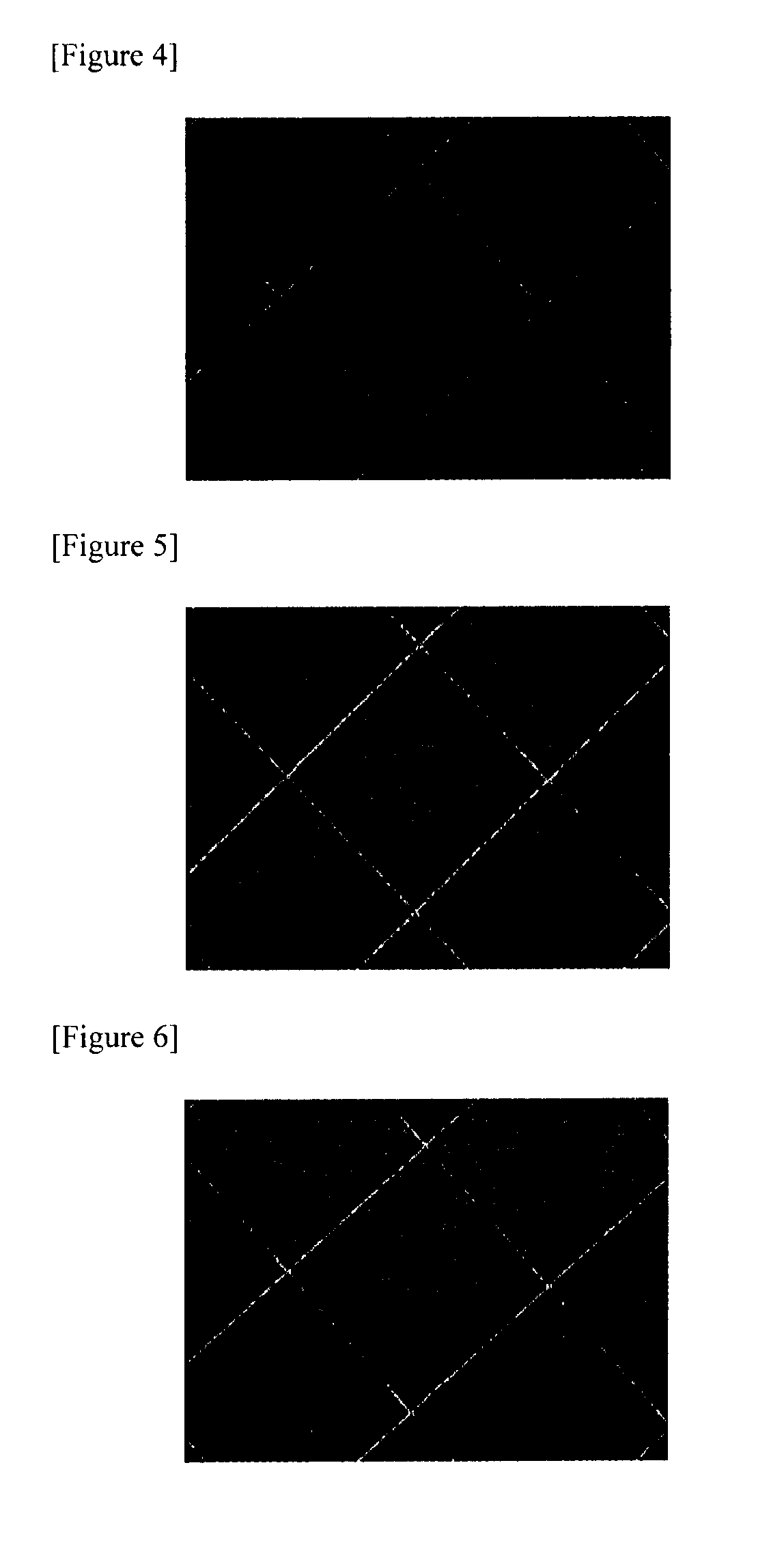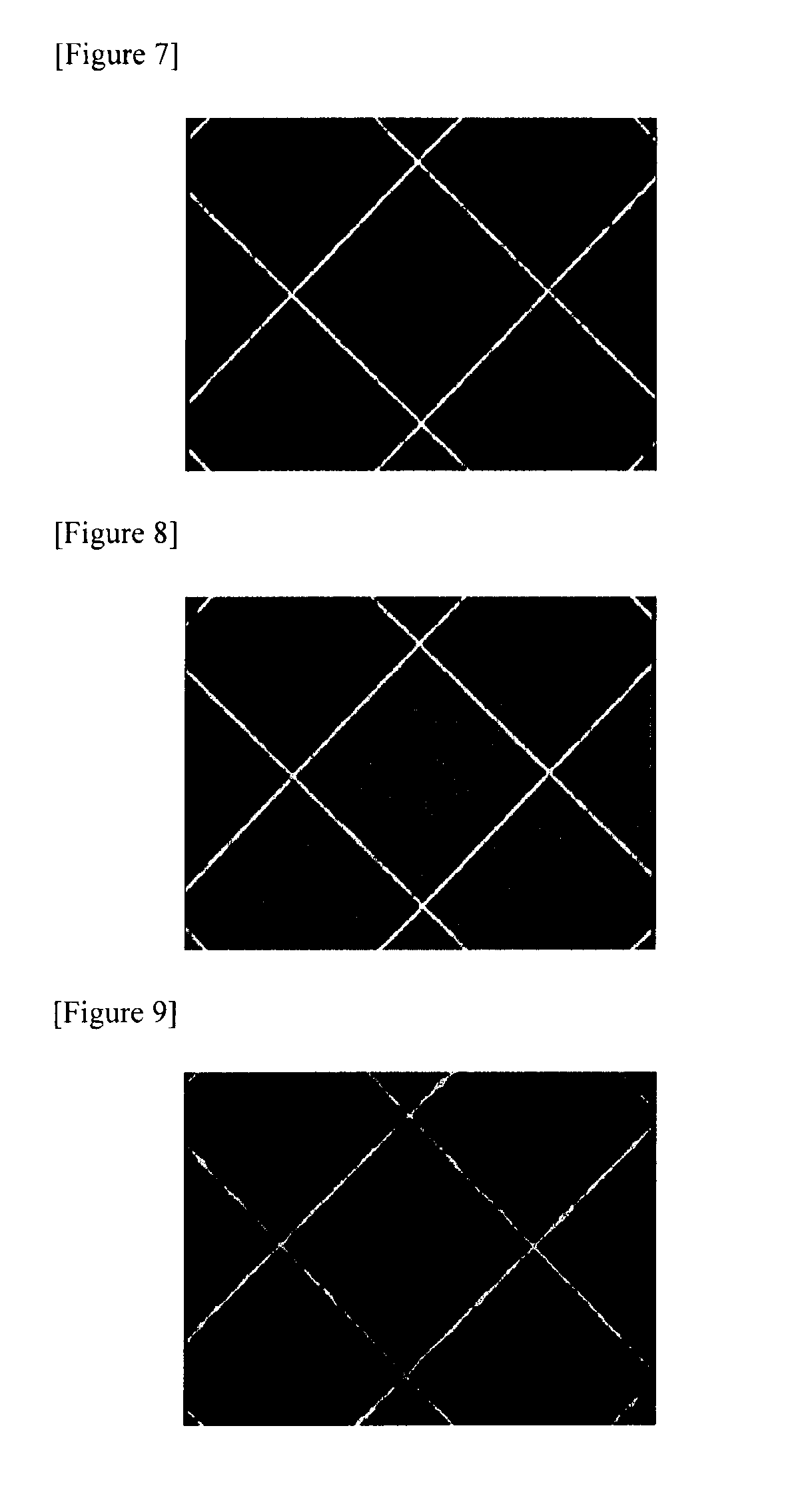Printing composition and a printing method using the same
a printing composition and composition technology, applied in printing, inks, polyether coatings, etc., can solve the problems of increasing process costs, increasing environmental pollution, and requiring a lot of time and many costs, and achieve the effect of improving drying problems and forming patterns of fine line width
- Summary
- Abstract
- Description
- Claims
- Application Information
AI Technical Summary
Benefits of technology
Problems solved by technology
Method used
Image
Examples
example 1
[0052]The printing composition (viscosity of 6000 cps) including the nanosilver paste (nanosilver 20 nm 70%, solvent 30%; the solvent is a mixture of alpha-terpineol and BCA (mixture of butyl carbitol acetate) and 5 wt % of 1-butyl-1-methyl pyrrolidinium bis(trifluoromethyl sulfonyl)imide on the total weight thereof was printed in the gravure offset manner at the relative humidity of 44%. In this case, the time from off to setting (hereinafter, referred to as a waiting time; Off is that all pastes on the cliché are transferred onto the silicon blanket, and Setting is that the paste on the blanket is transferred onto the substrate. Accordingly, the time after off is finished and directly before Setting starts is the waiting time was 0 sec. The printing result was shown in FIG. 2.
example 2
[0053]The same process as Example 1 was performed, except that the waiting time was 30 sec. The printing result was shown in FIG. 3. Even though the waiting time was 30 sec, it could be confirmed that the printing state was good.
example 3
[0054]The printing was performed in the same manner as Example 1, except that the waiting time was fixed to 0 sec and the composition of the ionic liquid was changed to 0.1, 0.5, and 1.5%. The printing results were shown in FIGS. 4 to 7. It could be confirmed that the printing state was good in the range of the composition.
PUM
| Property | Measurement | Unit |
|---|---|---|
| melting point | aaaaa | aaaaa |
| boiling point | aaaaa | aaaaa |
| height | aaaaa | aaaaa |
Abstract
Description
Claims
Application Information
 Login to View More
Login to View More - R&D
- Intellectual Property
- Life Sciences
- Materials
- Tech Scout
- Unparalleled Data Quality
- Higher Quality Content
- 60% Fewer Hallucinations
Browse by: Latest US Patents, China's latest patents, Technical Efficacy Thesaurus, Application Domain, Technology Topic, Popular Technical Reports.
© 2025 PatSnap. All rights reserved.Legal|Privacy policy|Modern Slavery Act Transparency Statement|Sitemap|About US| Contact US: help@patsnap.com



